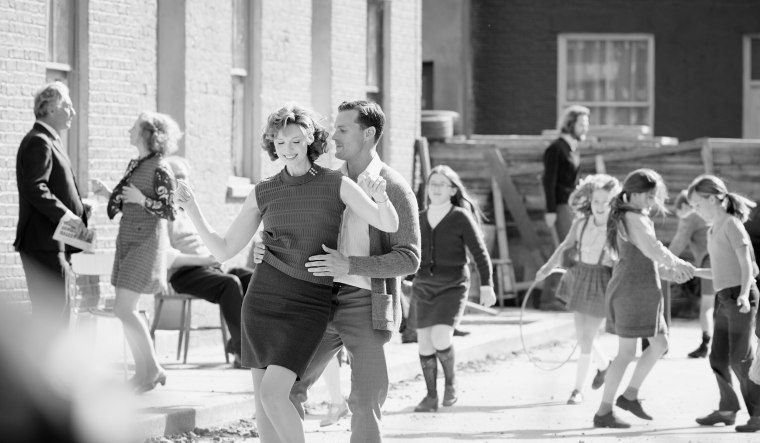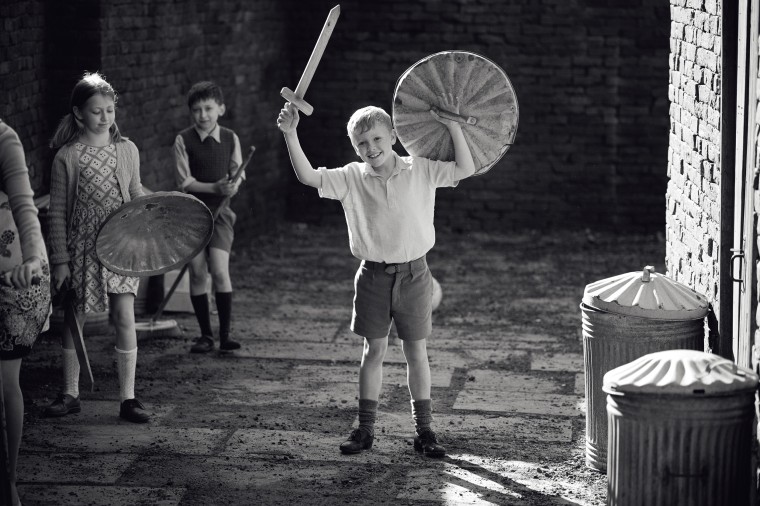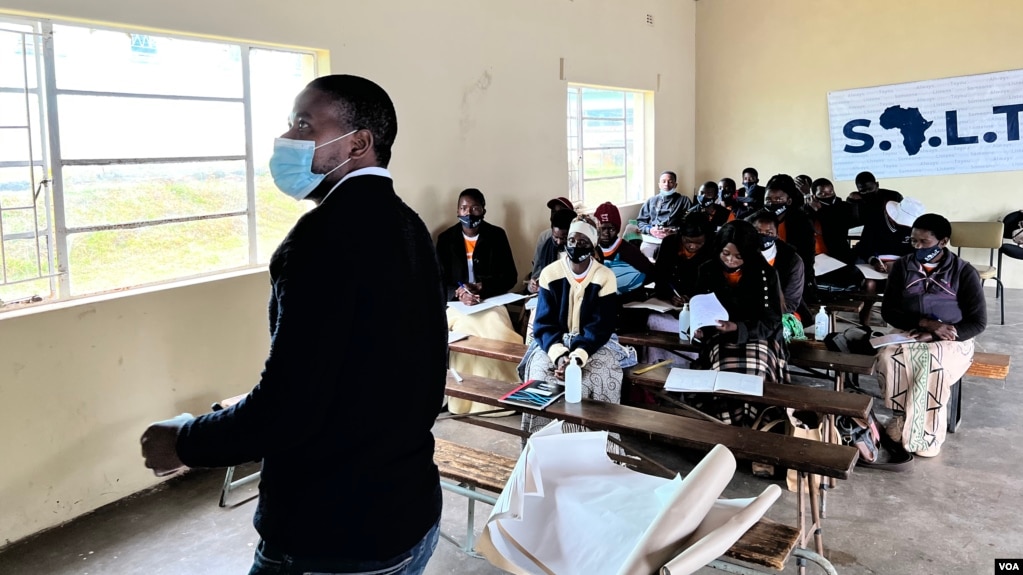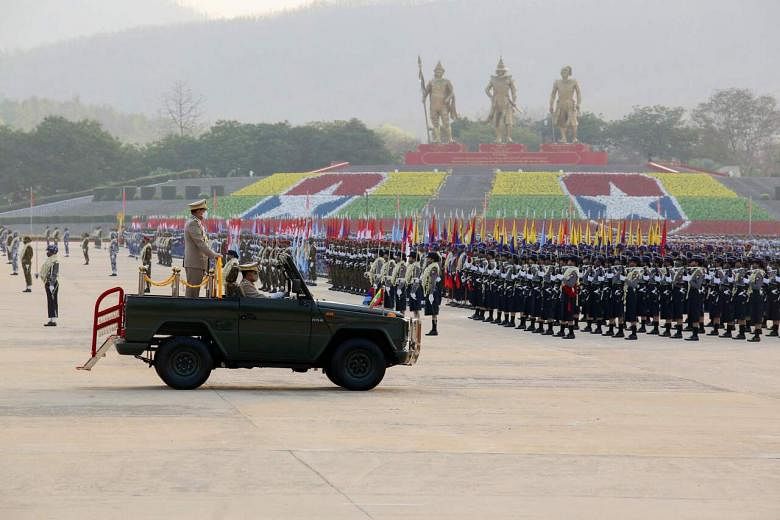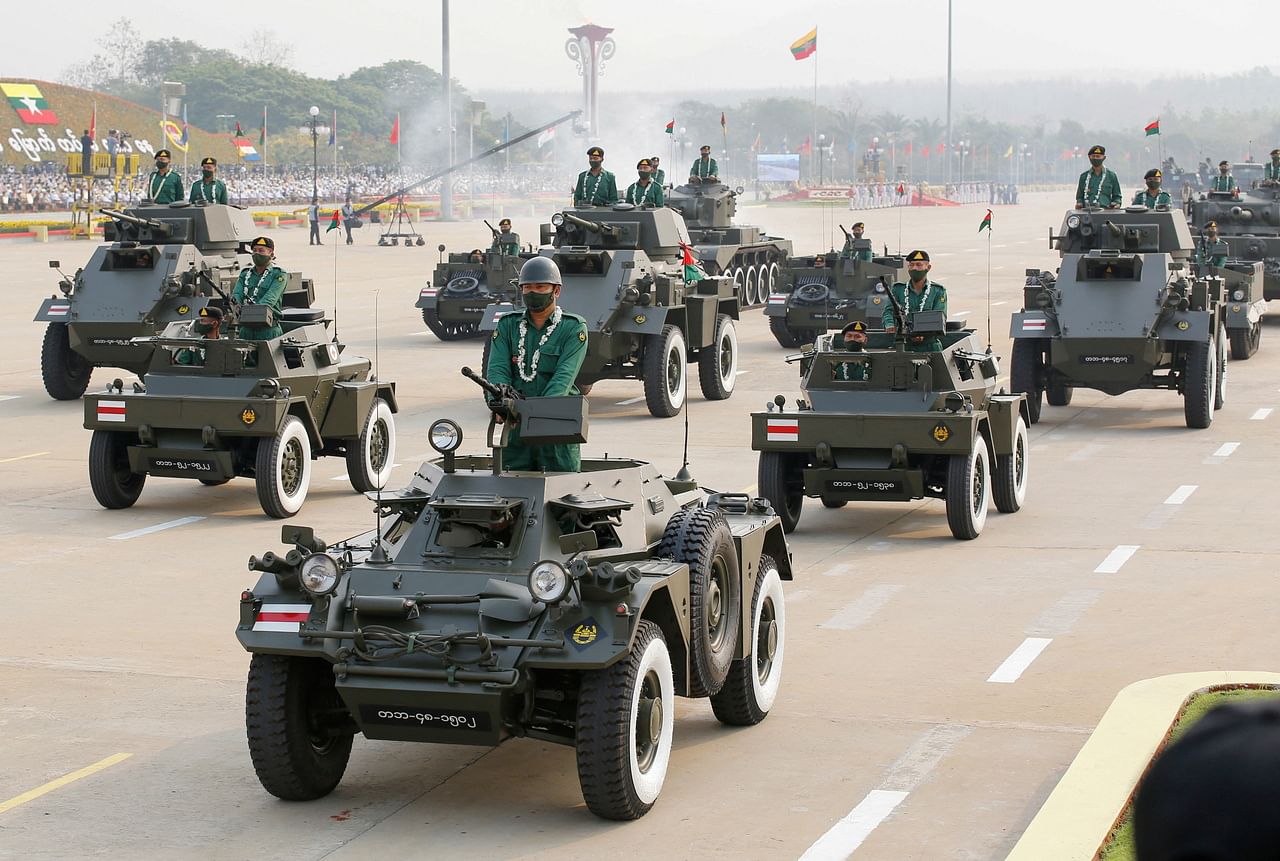Canada’s “Freedom Convoy” began with protesting rules implemented in January by the Canadian and later the US governments requiring truck drivers to be fully vaccinated to enter their country. It snowballed into a demonstration against dysfunctional coronavirus restrictions. The Ottawa trucker protesters demanded: No Lockdowns, No Mandates, No Vaccine Passports, and if not, that Trudeau resign.
Working people are increasingly angry at the failures of the neoliberal regimes in Canada and the US to meet our needs. Unfortunately, we on the left are not positioned to effectively utilize this sentiment and grow our forces, leaving an open field for leaders with rightwing solutions to fill the vacuum. They played on public resentment to advocate getting the state off our backs rather than our demand that the state prioritize our well-being.
Working class activists should participate and build these protests, bring working class solutions to the problems we confront and lead the people in fighting back. Instead, many on the left condemned the trucker convoy, or sat on the sidelines, seeing themselves as mere critics, not leaders in this class struggle.
Liberal Party Prime Minister Trudeau called the truckers “a few people shouting and waving swastikas,” a “fringe minority” conspiracy theorists “with the tinfoil hats.” They “don’t believe in science.” He threatened, “Do we tolerate these people?” These elitist anti-working class statements echo Hillary Clinton’s dubbing Trump supporters “deplorables.” The hysteria led by Trudeau and the corporate media even reached the point where a Member of Parliament absurdly declared trucker honking of horns meant Heil Hitler. Trudeau’s Big Business dictated covid policies even denied visas to vaccinated Cubans because they had Cuban, not Big Pharma vaccines.
Anti-trucker “Leftists” Repeat Trudeau’s Smears
Many left criticisms of the truckers follow the rulers’ talking points. For instance, they spread a corporate media cartoon smear, Bryan Palmer’s condemnation of the truckers as a “lumpen” alt-right petty bourgeois protest, as well as anti-war activist Stephen Gowans‘ early attack on the Ottawa occupation as “a far-right movement of racists, evangelicals, union-haters, and conspiracy-minded lunatics, inspired and supported by the likes of Donald Trump, Ted Cruz, and Elon Musk.” Gowans complained the Ottawa police had “done nothing to liberate the city” from what were peaceful protesters.
Rather than refuting the rulers’ smears, many either repeated them or remained silent in face of the onslaught. They, in effect, allied with the imperial state’s attacks on the truckers and their working- class allies. They compounded their error by making only mild objections to the central rightwing feature of the Ottawa occupation: Trudeau using martial law measures to crush peaceful protests – measures which could be used against leftists in the future if we become a social force.
What were some of the distortions so many disseminated in their unwitting role as transmission belts for ruling class propaganda against the truckers?
- That the protesters were racists and fascists was repeated over and over. Enough evidence shows this was not a racist protest (and here), It was claimed, with scant evidence, that the protest contained numerous Nazi and Confederate flags. A photo showed a man with a Nazi flag and another one or two with a Confederate flag. One man had the Nazi flag on a long pole underneath a sign on top saying “F*ck Trudeau,” which could mean he was equating Trudeau with Nazis. The person holding a Confederate flag was considered to be a provocateur made to leave the protest. Government agent provocateurs have played a role in other Canadian protests.
Benjamin Dichter, who is Jewish, and key spokesperson for the protest, said “Let’s assume there were guys there who did have a Confederate flag. They believe in the Confederacy of states’ rights in a foreign nation? I don’t care. I’m not here to police people’s ideas.” In a swipe at Trudeau, Dichter added, “I want to hear unacceptable opinions because I want to challenge them.”
Another Freedom Convoy leader was Metis, Tamara Lich. Pat King, a fanatic racist in the Nazi mold, was portrayed as convoy leader, but this was denied by the actual leaders (and here).
- That the Right funded the trucker protest became a key charge. Republicans do fund popular protests to further their aims. So do the Democrats, as the women’s marches testify. A protest bringing out masses of people likely involves corporate political party funding. It is a political mistake to condemn or boycott movements, MeToo, Black Lives Matter, anti-vaccine mandate, or climate change protests because they had corporate donors. To condemn a protest funded by Republican corporate donors, but not those funded by Democratic ones, given these donors serve the same ruling class owners of the US, is a double standard. To do so suggests aligning ourselves with the Democratic (or Liberal) Party faction of the ruling class.
Reports on big right-wing funders of the trucker convoy failed to establish significant dollar contributions. PressProgress gave “a round up of some of the big money donors.” The corporate donors listed contributed merely $67,300 of the $10 million raised. That amounts to less than 1% of the total, showing corporate donors gave very minor support.
GiveSendGo raised another $8.6 million for the protesters. The largest, $215,000 came from an anonymous donor, $90,000 from billionaire Thomas M. Siebel, and $75,000 from another anonymous donor. Even if we assume these three are by big rightwing donors, that amounts to $380,000, 4.4% of the total.
A Washington Post article on donors noted, “Only a handful of contributors gave more than $10,000 apiece,” which does not substantiate corporate and billionaire funding of the protests.
It seems these donations do not include seed money for the Freedom Convoy, but they do show it was not “fringe,” but had gained broad support.
The GoFundMe platform raised $10 million dollars for the convoy before being shut down. The reason given was for “violating the platform’s Terms of Service prohibiting the ‘promotion of violence and harassment.’” Yet no protester had been charged with violence. Defenders of civil liberties should have condemned that repression, not approve of it.
- That the trucker convoy represented a social fringe is belied simply by some news reports, such as this or this.
- Many falsely claimed the Freedom Convoy protesters were anti-vaxxers, pointing out that 90% of Canadian truckers are vaccinated. However, the protesters were united against vaccine mandates, not against vaccines. Benjamin Dichter and Chris Barber, two convoy leaders, said they were not anti-vaxxers but fully vaccinated.
- Some asserted the truckers were petty bourgeois owner-operators, therefore not working class, because they owned their instruments of production. Even assuming some of the truckers are in the petty bourgeoisie, that in itself is no reason to condemn a petty bourgeois movement in struggle with the big bourgeoisie.
Aren’t owner-operators among the millions of workers who companies “contract out” to cut labor expenses and increase their profits? Are Uber drivers also middle-class owner operators? Or any worker hired by a business as an “independent contractor”? This new category of atomized workers is a product of the long neoliberal offensive to weaken solidarity among workers.
- Many used Trump’s support for the truckers as another reason to condemn it. That makes no more sense than saying if Biden or Trudeau opposes the protest, we should too. This liberal-left fear and loathing of Trump ignores a number of commendable statements he made on issues anti-imperialists advocate for.
- Some bolstered their attacks on the truckers by referring to the Teamsters and Canadian Labour Congress. The Canadian Teamsters condemned the trucker convoy as a “despicable display of hate lead by the political Right,” but provided no evidence to back that up. The statement said nothing against the central demands of the protest. The Teamsters represent only 15,000 long haul truck drivers of the 300,000 long haul drivers in Canada.
The Canadian Labour Congress condemned the protest but was also silent on vaccine mandates. “This is not a protest, it is an occupation by an angry mob trying to disguise itself as a peaceful protest.” Of course protesters are angry, otherwise they do not protest. Being angry does not mean you are not peaceful. The CLC adds “This occupation of Ottawa streets…is having a devastating effect on the livelihood of already struggling workers and businesses.” Such statements could be used against the Occupy Movement in 2011, or against Black Lives Matter protests, as Trump did. “Frontline workers, from retail to health workers, have been bullied and harassed.” Yet so was at least one pro-trucker Ottawa store owner bullied and harassed for simply donating to the protest.
True, the Freedom Convoy had no working class demands for government action to ease the hardships workers face. Neither did the CLC or Teamsters, actual workers class organizations with the social and economic weight to have their demands met.
- Many followed Trudeau and claimed the convoy organizers were violent and extremists. However, the police reported no physical violence, and none of the protest leaders were arrested for violent acts.
Tamara Lich was charged with ‘counselling for the offense of committing Mischief,” convoy leader Chris Barber for the same charge, plus “counselling to commit the offense of Disobey a Police Order” and “counselling to commit the offense of Obstruct Police.” Pat King was charged with mischief, counselling to commit the offence of mischief, counselling to commit the offence of disobey court order, and counselling to commit the offence of obstruct police.
Many had claimed they were guilty of violence, sedition, and attempting to overthrow a “democratic” government. Here they are, charged with “counseling” mischief (interfering with or destroying someone’s property), telling people to defy a court order or police order. What activists have ever been innocent of these charges?
- It was claimed the police had treated the protesters with kid gloves. Maybe. Yet, once the police cracked down, they used horses to trample some protesters. When the 2011 union protesters in Madison Wisconsin seized the Capitol building — not for a day but for weeks — the police were not only letting us enter and exit, but periodically joined the protest (and here). That was no sign that the Madison protests were right-wing, nor did leftists object to their solidarity.
As Caleb Maupin pointed out, liberals and leftists took the Fox News playbook to denounce the Black Lives Matter movement and used the same methods to attack the trucker protest. Those who support Black Lives Matter suddenly were ok with police repression of the Ottawa protests. By favoring government crackdown on peaceful protests, we gave the ruling class rope to hang ourselves with.
Working Class and Right-Wing Programs towards Covid and Health care
Being vaccinated protects you from getting very sick if you have underlying conditions but does not protect you from being infected or infecting others. People know that, so resent government vaccine requirements.
Mandates work when applied by governments that put the protection of citizens over the protection of corporate profits — not the case in the United States or Canada. Targeted lockdowns once covid makes its appearance, constant testing of the population, combined with a wide array of public health measures neither Canada nor the US ever instituted, has enabled China to almost eliminate deaths from Covid.
China contained Covid long before their vaccine was even developed. China provided house to house care for those locked down, constant and widespread testing, as well as relatively free health care for all. As a result, China has had three Covid related deaths since January 2021, while the US has had one million.
Nicaragua, which has a free, universal preventive health care system, has by far the lowest Covid death rate per million inhabitants of all the Americas, yet never instituted any sort of mandate or lockdown, beyond wearing a mask inside public buildings.
Participate in the Ottawa Protests with Working Class Demands
While the demands of the trucker protest had some merit, the Freedom Convoy leaders were ideologically rightwing. Their view of health care as an individual responsibility does not conflict with the neoliberal model. This benefits those with the privileges and financial resources to handle it.
Our working class view sees the state as the protector of public health, since health is a public issue, not simply a “free” individual’s responsibility.
We missed an opportunity to participate in the Ottawa occupation and organize working class solidarity with our message: government should meet the health and economic needs of the people affected by the pandemic; the government protects big business and big pharma super profits during the pandemic while our standard of living suffers; health care is a community issue and should be a human right. It should focus on prevention, with continuous education of the public, and establish clinics in every neighborhood, cultivating regular interaction between the health workers and the community.
If we fail to help lead workers and popular struggles, we leave the field open for middle class or right-wing leaders. Even the sometimes liberal Nation recognized, “the far-right origins of the protest shouldn’t be an excuse for ignoring the fact it is attracting the support of a segment of the population that doesn’t identify with the far right but does feel economically marginalized and hurt by a pandemic now entering its third year… Those who have sympathy for the convoy tend to be poorer, younger, and less educated.”
Some activists did stand for the working class approach to the Ottawa occupation. Dust James, a trucker, encouraged the left to join the protesters and explain to them that all truckers share a common problem with others: small businesses and workers are being crushed by the larger monopolies, big banks are ripping off all of us.
Richard Wolff said leftists made a serious error by not actively participating in and solidarizing with the trucker protest, showing workers how to use their power to achieve their demands. A struggle to push back against mandates that don’t work can ignite actions against other policies that don’t serve people’s interests. Struggles often begin as a fight against a specific injustice, eventually opening the door to struggles on more fundamental issues.
Leila Mechoui and Max Blumenthal applauded actions by working class people to improve their situation and resist impositions by private and public authorities. The truckers protest scared the rulers because they fear losing their control over who determines how society is run. They don’t want workers thinking they should have some say in societal decision-making. They don’t want workers to start thinking “why should we do what the bosses tell us to do if it doesn’t make sense.”
Richard Wolff and Jimmy Dore emphasized we should be and can be everywhere workers are struggling. “The left should not put itself in a situation where the protesters can lump them together with the authorities as enemies of their struggle, which is the case now.” Here, the left isolated themselves from the working class by attacking the movement as a whole.
Why Many Repeated Ruling Class Liberal Smears of the Truckers
Being an anti-war writer like Stephen Gowans does not mean you have close connections with working class struggles at home. Likewise, many working class fighters do not possess an anti-imperialist outlook. Unfortunately, working class and anti-war fighters often operate in distinct social and political milieus.
Many have made critiques of the convoy and Ottawa occupation, such as a recent webinar by left intellectuals. Yet the problem we face is that the function of a working class leftwing goes beyond evaluating a movement. Our function should be to create a plan of action to participate in and help lead social struggles in a working class direction through demands that benefit the working classes as a whole. We are not there, nor are we making headway in building the army of working class activists needed to carry it out.
At present, far too many critics of the truckers feel in their heart of hearts that our white working class is full of “deplorables.” That illustrates the current disconnect of leftists from the white working class. Too many feel the working class may be the force that will overthrow capitalism and build a just society, but not with the working class we have. This white working class today is too ignorant, bigoted, backwards, bought-off, too white privileged. If it is not kept in check, things could only get worse.
So, where do they turn for a social power to rotate around for building progressive social change? Often it means to the more enlightened intelligentsia, the more progressive politicians. That leads to the Democratic Party or the Canadian versions: pressure them from the left and build support for them in their struggle against Trumpers. This approach became pronounced as fear of Trumpism grew.
This may explain why many on the left repeated Trudeau’s smears and may be why they — who normally support workers — sided with the government against working people when they organized and protested. Such an approach, if not corrected, leads to more police state repression and an increasingly divided working class confused over where to turn to solve their problems.Facebook
Stansfield Smith, Chicago ALBA Solidarity, is a long time Latin America solidarity activist, and presently puts out the AFGJ Venezuela Weekly. He is also the Senior Research Fellow at the Council on Hemispheric Affairs.
Read other articles by Stansfield.

